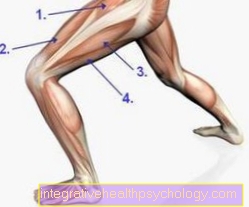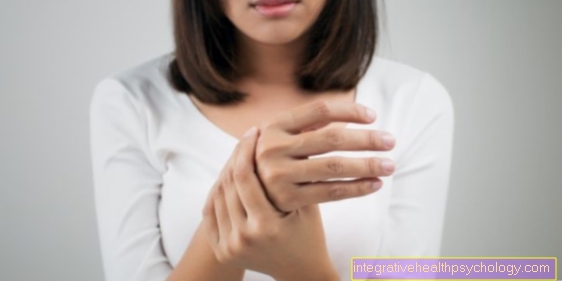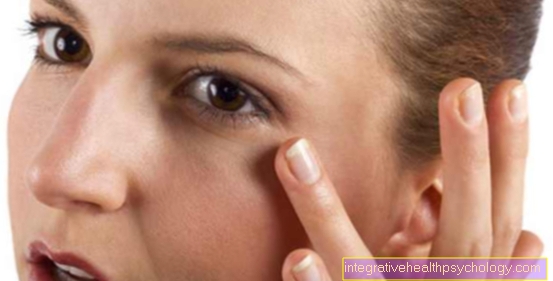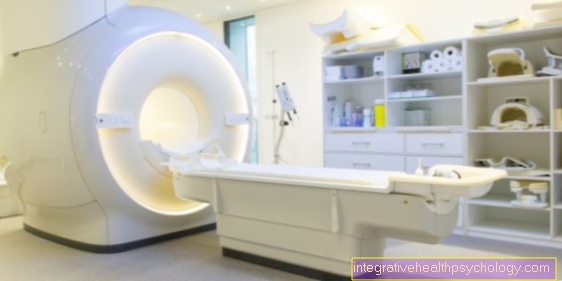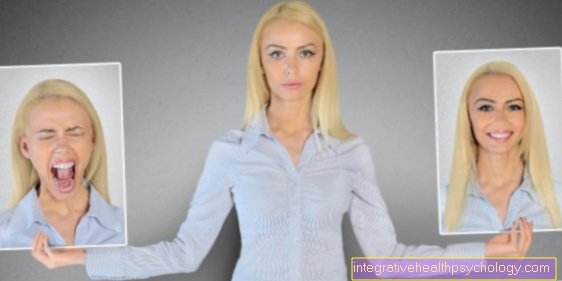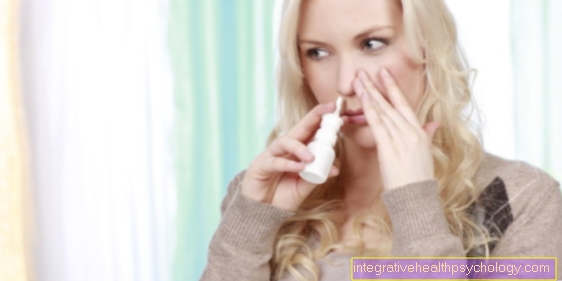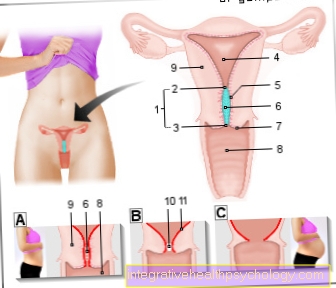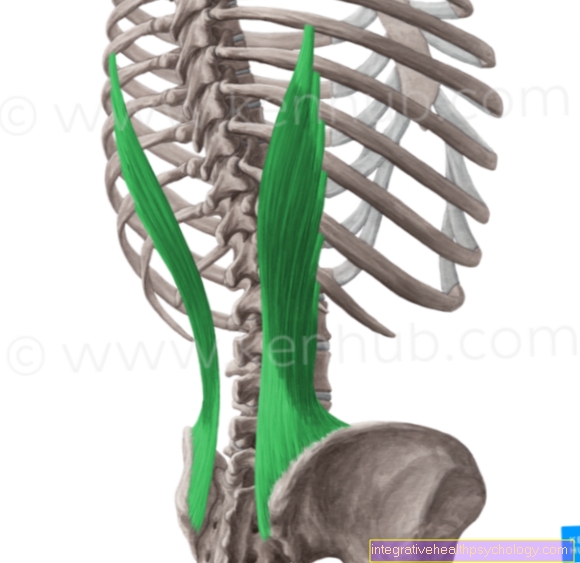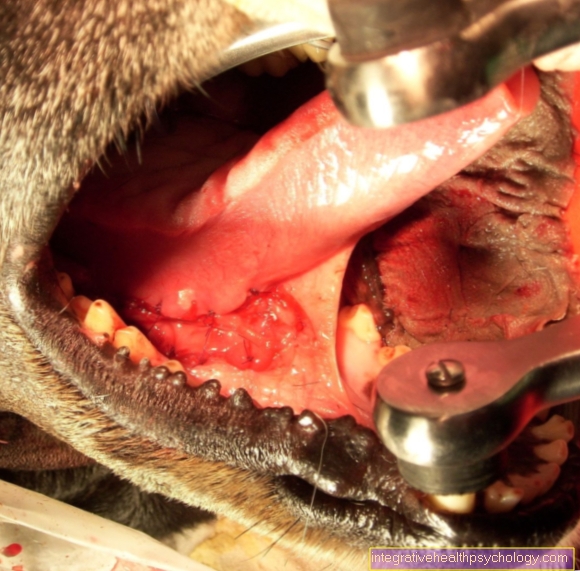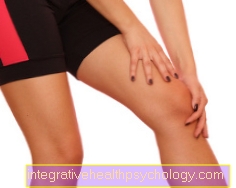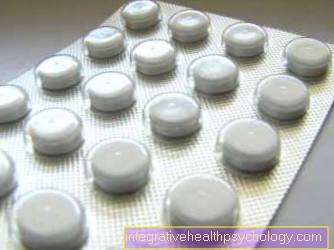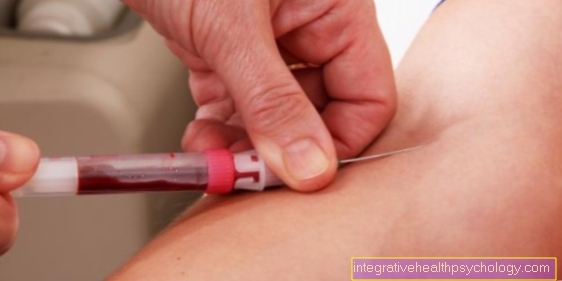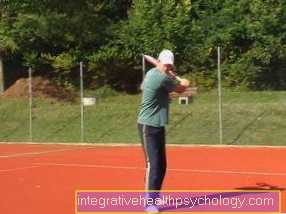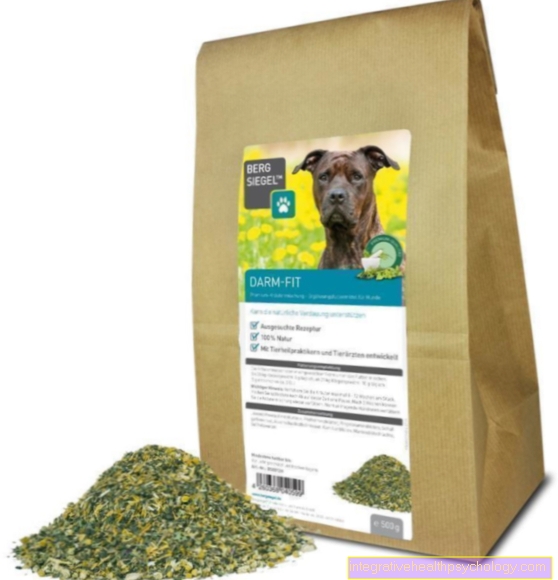Cortisone in babies
introduction
Cortisone and cortisol (hydrocortisone) are endogenous hormones and belong to the so-called glucocorticoids. As a drug, cortisone is one of those with the most uses and indications, not least because of its multitude of effects, including a reduction in inflammatory reactions.
In the event of a deficiency or complete absence of cortisone in the body due to certain illnesses, this must be supplied for life. If the aim is to reduce inflammatory reactions and symptoms, it can be used for short-term therapy. With local treatment, for example with ointments or eye drops, the side effects can be kept to a minimum.

Effect and indications
In substitution therapy, cortisone is used in adrenal insufficiency (Addison's disease) and in adrenogenital syndrome, also in babies. The body's cortisone production does not work properly, which is why cortisone must be supplied from the outside.
In addition to substitution therapy, cortisone is also used for symptomatic therapy: in acute situations, for example in allergic reactions up to anaphylactic shock, in acute asthma attacks and in an acute flare-up from an autoimmune disease. In babies, these are primarily various types of inflammation of the blood vessels.
Long-term therapy is used for chronic inflammatory diseases such as asthma as well as for rheumatological diseases - certain forms of which can already occur in babies. If cortisone is used for lung diseases such as asthma or other, rarer diseases, it also has the effect that chronic changes in the lungs can be avoided.
For inflammatory skin diseases - such as neurodermatitis - cortisone can be used in the form of ointments, for eye diseases for example in the form of drops. This is called local therapy. The therapy always aims to avoid inflammation and consequential damage.
Cortisone therapy for coughs and bronchitis
If bronchitis occurs in babies, it is usually accompanied by a narrowing of the airways, since the very small airways of the babies swell faster due to the inflammation than in older children (obstructive bronchitis). Cortisone should be used in the case of pronounced symptoms such as shortness of breath.
If obstructive bronchitis occurs repeatedly, for example three or more in six months, or if asthma is present, long-term therapy with inhaled cortisone must be initiated. The aim is that the baby / child can lead a life without restrictions. Cortisone reduces the risk of re-bronchitis and prevents the irreversible remodeling processes that take place in the lungs with frequent bronchitis.
Read more about the topics:
- Duration of bronchitis
- Symptoms of bronchitis
- Chronic bronchitis
Cortisone therapy for neurodermatitis
In severe cases of neurodermatitis (atopic eczema), ointments and creams containing cortisone are used. A distinction is made in cortisones from class 1 to 4 in increasing strength.
In general, these creams should only be used in the acute episode if possible, as this is where they show the best effect and only slowly show side effects with long-term use. It is now accepted that these creams are safe to use on babies, unlike tacrolimus ointments.
Find out more about the topic here: Atopic dermatitis in babies
Side effects
Systemic administration (tablets or suppositories)
In acute therapy, no side effects are to be expected even with high, systemic doses of cortisone.
With systemic long-term therapy (high-dose for at least three months) with cortisone, thinning of the skin (atrophy) is to be expected. Wound healing disorders can occur, which means that wounds take longer to heal. Furthermore, due to the effect on the body's electrolyte balance, high blood pressure and the storage of water can occur. Due to the increased excretion of calcium, calcium can be stored in the kidneys, which leads to kidney dysfunction.
It can also lead to stunted growth of the bones and obesity. Diabetes can also develop. One of the most important side effects is the weakening of the immune system and the associated increase in infectious diseases.
Local application (cortisone ointment or cortisone spray)
Inhaled cortisones, for example as a spray or inhaler, can lead to a local reduction in the immune system affecting the mouth and throat and thus promote local infections. A so-called oral thrush, i.e. an attack on the oral mucosa by yeasts, is typical. Hoarseness can also occur in the long term due to the effect on the vocal cord muscles. This can be prevented by rinsing your mouth out with water after each cortisone spray. Especially with babies and children, it is important not to forget to rinse. Alternatively, something can be drunk after the drug has been administered.
Find out more about the topic here: Oral thrush in babies
With cortisone in creams or ointments, local thinning of the skin (atrophy) can rarely occur and only with long-term therapy. One also speaks of a cigarette paper or parchment skin. The areas at risk are the face, skin folds and areas around the genital and anus. The lowest possible grade of cortisone should always be used in these areas.
If my pediatrician recommends it, why should I give my child cortisone?
Cortisone is an extremely effective, well-researched, and important drug.
Side effects usually only occur with long-term therapy. In many diseases, however, cortisone is the only effective therapy that can improve symptoms and prevent consequential damage. The aim of treatment with cortisone is always to enable the children to live as freely as possible and, in addition, to prevent permanent damage, for example through a remodeling of the lung tissue.
Cortisone can also help to contain an initial inflammatory reaction so that the body's own healing mechanisms can then take over again. In order to make all of this possible, a dose of cortisone, if recommended, is essential. Alternative medications are usually associated with more severe side effects, especially in children.
What can I do to reduce the side effects?
The side effects of cortisone therapy are usually very minor. Relevant side effects only occur with long-term therapy. You can keep this to a minimum by following the instructions of the prescribing doctor exactly. If anything is unclear, you should always ask exactly. Ask for regular check-ups to check whether side effects are occurring, whether they need treatment and, above all, whether further cortisone therapy is necessary. Cortisone should only be used for what it was specifically prescribed for. For example, you shouldn't simply use the cortisone cream from an older or younger sibling. Use creams only in the areas prescribed for them. Cortisone should only be used very carefully and in small doses, especially in the face and genital and anal areas, as side effects are more common.
After using a cortisone spray, the mouth must be rinsed out to prevent side effects. Alternatively, you can drink something after each use.
In the case of systemic therapy (tablets or suppositories), the cortisone should be given in the morning if possible. This corresponds most closely to the natural fluctuations in the body's own cortisone.
What options are there if cortisone doesn't help?
Cortisone is one of the drugs with the most reliable and best effects in modern medicine. If treatment with cortisone does not help, it should first be checked whether the cortisone was used correctly. Was the right amount of medication given in the right way at the right time? If cortisone still does not improve the child should be presented to the pediatrician.
If cortisone is given in the form of juice or suppositories for a cough or pseudo-croup attack, it only works after a period of 30 minutes to two hours. If there is no improvement in the symptoms after two hours, a pediatrician should be consulted. Cortisone should not be seen here as an emergency medication for acute shortness of breath, as it takes too long to take effect. If cortisone is used correctly when indicated, it is effective for all diseases for which regular cortisone therapy is established.
Find out more about: Pseudo croup in the baby
Why is there so much fear of the body's own hormone cortisone?
The fear of cortisone is mostly based on dangerous half-knowledge from medical or pseudo-medical forums and a lot of hearsay. Side effects such as those listed above sound dangerous and can occur, but this risk must be put in relation.
Side effects as described are usually only to be expected with systemic therapy (i.e. administration by tablet, suppository or infusion) over a long period (about three months or more). In this way, cortisone is only prescribed for severe illnesses such as severe forms of rheumatism or serious autoimmune diseases. If cortisone is applied locally, i.e. in the form of asthma sprays or ointments and creams, side effects are usually not to be expected. If at all, these only occur locally at the application site.
Ultimately, cortisone therapy makes use of an endogenous substance that is formed every day in humans by the adrenal cortex. It helps to regulate alertness and stress reactions, naturally influences the immune system by inhibiting excessive reactions and also helps to regulate the metabolism of protein and fat in the body.

